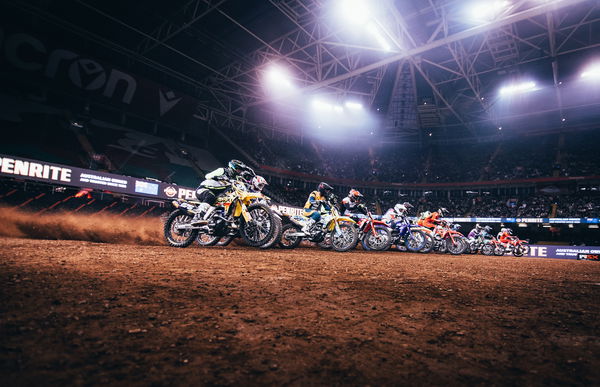Your Guide to FIM World Supercross Championship
THE FIM World Supercross Championship starts in less than one month with the British Grand Prix at Villa Park. But, what actually is World Supercross, or even supercross as a discipline?
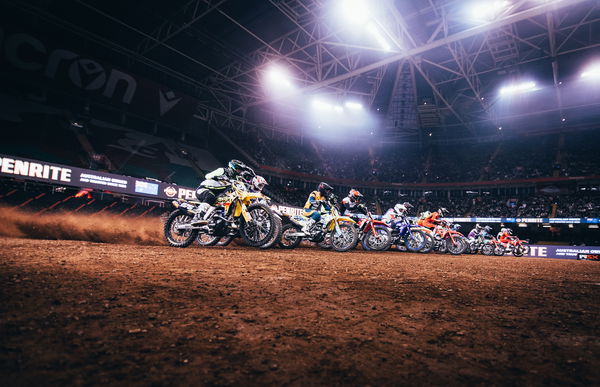
Supercross started in 1974 in the US when the federation there, the AMA, realised that the potential of dirt bike racing’s popularity was limited by the remoteness of the tracks on the AMA Pro Motocross calendar.
Instead, then, of asking fans to go to a motocross track miles from anywhere, the AMA decided that there would be potential to increase the sport’s growth by holding races in city-based stadiums.
Since the first supercross race at the LA Coliseum almost 50 years ago, the discipline has changed a lot, and is now quite formulaic in terms of its track designs. Although supercross track layouts are generally used for one race and then changed for the next year’s race in the same venue, they are, by 2023, generally all made up of the same features.

Three- and five-foot jumps, along with tabletops (otherwise referred to as ‘on-offs’) generally make up the rhythm lanes, which are straight sections filled with jumps. Generally speaking, rhythm lanes are places for time to be lost, but not made up. Ultimately, most rhythm lanes have one fast line, so the pressure is on the riders in these sections to hit them cleanly in order to not lose time. But, the longer the lane, the more rhythm options become open, generally speaking.
The corners at either end of a rhythm lane can also have a bearing on what the fastest rhythm in the lane turns out to be. For example, if the corner before the rhythm lane is a flat 90-degree corner, the first jump in the lane is more likely to be ‘singled’ or ‘rolled’ than if the corner before the rhythm is a 180-degree banked corner.
These two types of turns, 90-degree and 180-degree, are those which are most commonly found on a supercross track. Generally speaking, 90-degree corners offer less overtaking chances than 180-degree turns, because the 90s tend to funnel riders into one line, whereas banked 180s offer more line choice.
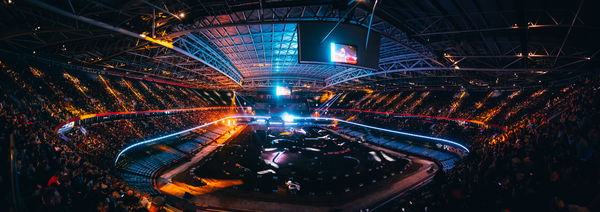
Rhythm lanes are not the only things connecting corners. There are also whoops, supercross triples, shorter jump sections, dragon’s backs, and the finish jump.
Whoops sections pack between 10-or-so jumps and 20-or-so jumps into one lane so that they act almost more like large bumps. Typically, when the track is fresh and smooth, riders will skim (also known as blitzing) across the top of the whoops. When the track starts to break down later on in the day, jumping several whoops at a time can often become the faster option. The whoops are generally regarded as the most technical feature on a supercross track, because of their demand on the riders’ technique and confidence, as well as the setup of the motorcycle. This demand comes both from the whoops themselves, and the way in which the track surface breaks down over the course of race day.
Dragon’s backs are essentially a short whoops section built with an incline, at the top of which the riders jump off the top either to flat ground or to the downside of a single built after the dragon’s back.
A Supercross Triple is, generally, the largest jump on the track, at around 70ft. It is quite self-explanatory, with three jumps placed together, intended for riders to jump from the take-off of the first to the landing of the third.
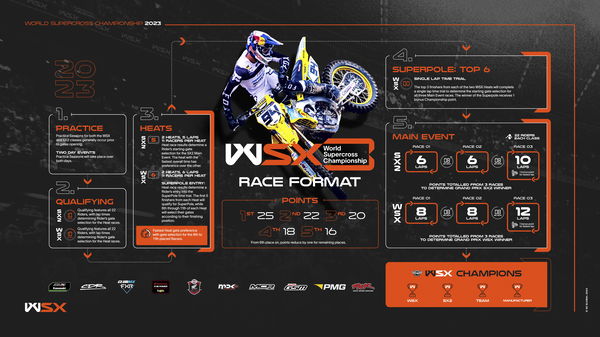
Finally, the finish jump ends the lap, and usually has the transponder line at the bottom of the take-off ramp. This is also an area where World Supercross, which uses a metal take-off ramp, differs from the AMA series, which uses a standard dirt jump.
It is up to the track designers to decide which features will be used, and where they will be placed on the track. The combination of a track that challenges the riders, but which also offers good overtaking opportunities is the target of every build.
So those are the basics of a supercross track, but what about World Supercross itself?
Well, there has been an FIM World Supercross Championship since 1987 when the Rodil Cup was given FIM World Supercross Championship status. However, 2023 will be only the second season of World Supercross in its current guise.
Between 2008 and 2021, the AMA Supercross series was also the FIM World Supercross Championship for the discipline of supercross (AMA Supercross an FIM World Supercross Championship). The FIM was never entirely popular in the AMA series, and its promoters, Feld Entertainment, decided to split with the FIM at the end of the 2021 season.
SX Global had been promoting the Australian Supercross series until that point, and with some success, as some of the top riders from the US - such as Justin Brayton and Jason Anderson - would often head off to Australia to race the national series there before the start of the AMA series in January.
However, when the tender opened for the promotion of the FIM World Supercross Championship, it was SX Global who won the contract.
The idea of the World Supercross Championship, in its latest guise under SX Global, is to take supercross worldwide, whereas in the past it has been largely limited to the US.

Part of the methodology behind enacting this global expansion of supercross racing is to make the series stand out from its more-established US counterpart. This is why SX Global has got Ken Roczen, a 22-time 450SX Main Event winner in the AMA series, on-board for World Supercross until 2025; it is all good having a product as exciting as supercross to bring to people around the world, but you also need the best athletes in that sport in order to bring the people in, and, in Roczen, World Supercross has one of the top five supercross racers on the planet at the moment.
Aside from the obvious distinguishing factor of being a series which visits multiple countries and continents, World Supercross also finds distinction from the AMA in its format.
Whereas the AMA series has two heat races leading into a Last Chance Qualifier (LCQ) race and finally a Main Event each for the 250cc and 450cc classes at all but three of its 17 rounds, World Supercross takes a similar route to a quite different finale.
Instead of only one ‘final’ race, World Supercross has three short races after the heats, LCQs, and Superpole (in which the top three riders from the two WSX-class heat races contest a one-lap shootout to decide gate picks one-to-six for the finals) in order to determine the overall winner in both the SX2 (250cc) and WSX (450cc) class. Finals for the SX2 class see two, six-lap races followed by a 10-lap race; while the WSX finals have two, eight-lap races followed by a 12-lap race.

The gaps between the races for both classes have increased over last year, from five minutes to eight minutes; and points are awarded equally in each of the three races, from 25 points for the win down to one point for 20th, and points count towards both the overall result for the Grand Prix, as well as towards the championship standings.
The different format compared to AMA Supercross allows World Supercross not only to offer something different, but also a format which provides short, sharp bursts of entertainment over a prolonged period. With such short race distances, there is never a moment for the individual races to die down, and with each counting towards the overall GP score, the importance placed on the start is amplified, which should, theoretically, lead to more mixed-up results.
Finally, the World Supercross Championship differs from the AMA series by the franchise model on which it is built. Instead of having essentially anyone turn up to any race to compete and try to qualify, World Supercross mandates that anyone who competes is assigned to one of the 10 franchised teams, which each field two WSX and two SX2 riders. In this respect, World Supercross is much more comparable to Formula One or MotoGP than it is to AMA Supercross, AMA Pro Motocross, or the MXGP World Championship.
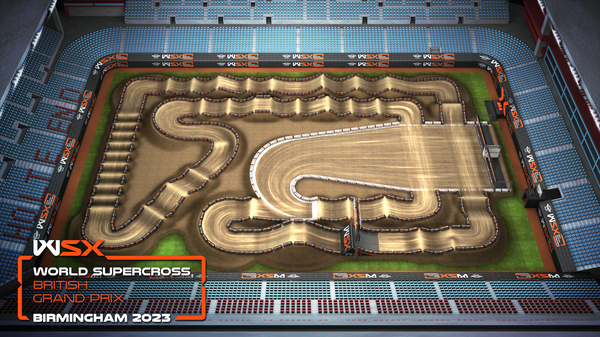
While, on one hand, this model is rather antithetical to a core ideal of motocross, which is that anyone can turn up and try to qualify; on the other hand, it places the foundation for the series to build the identity it wants to have, which is that the riders who race the World Supercross Championship are the best supercross riders in the world.
Tickets for the first two rounds of the World Supercross Championship, in the UK and France respectively, are available for purchase now on the World Supercross website.
SX2: 6 lap race > 8-minute break > 6 lap race > 8-minute break > 10 lap race.
WSX: 8 lap race > 8-minute bread > 8 lap race > 8-minute break > 12 lap race.
